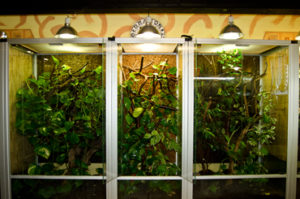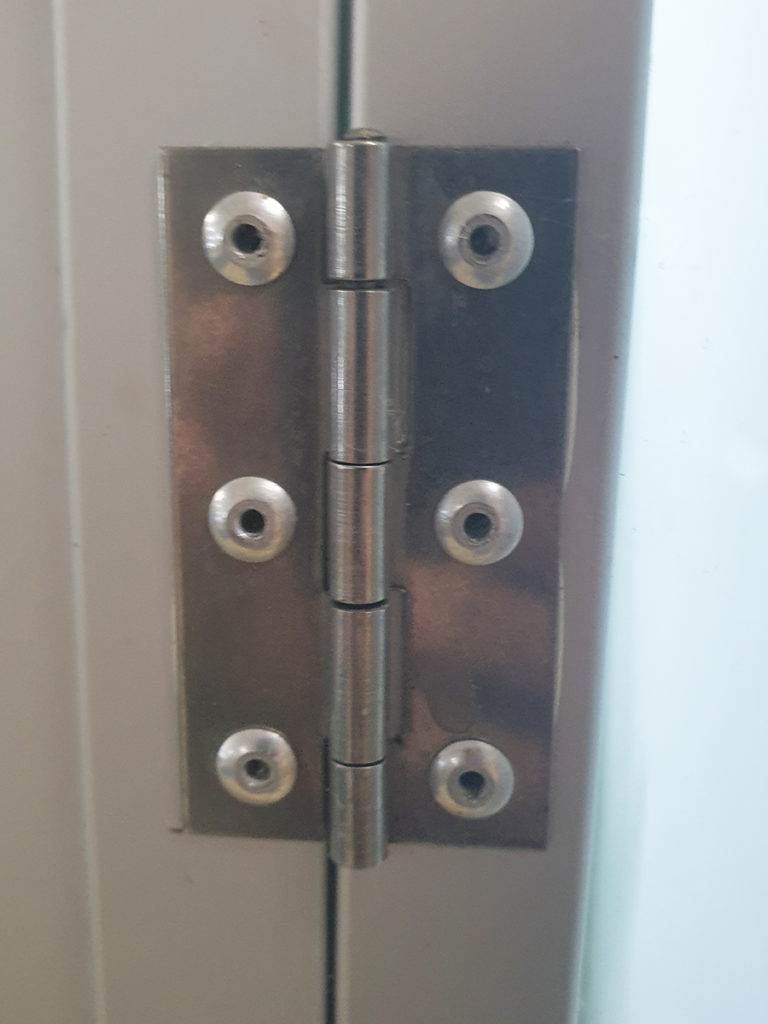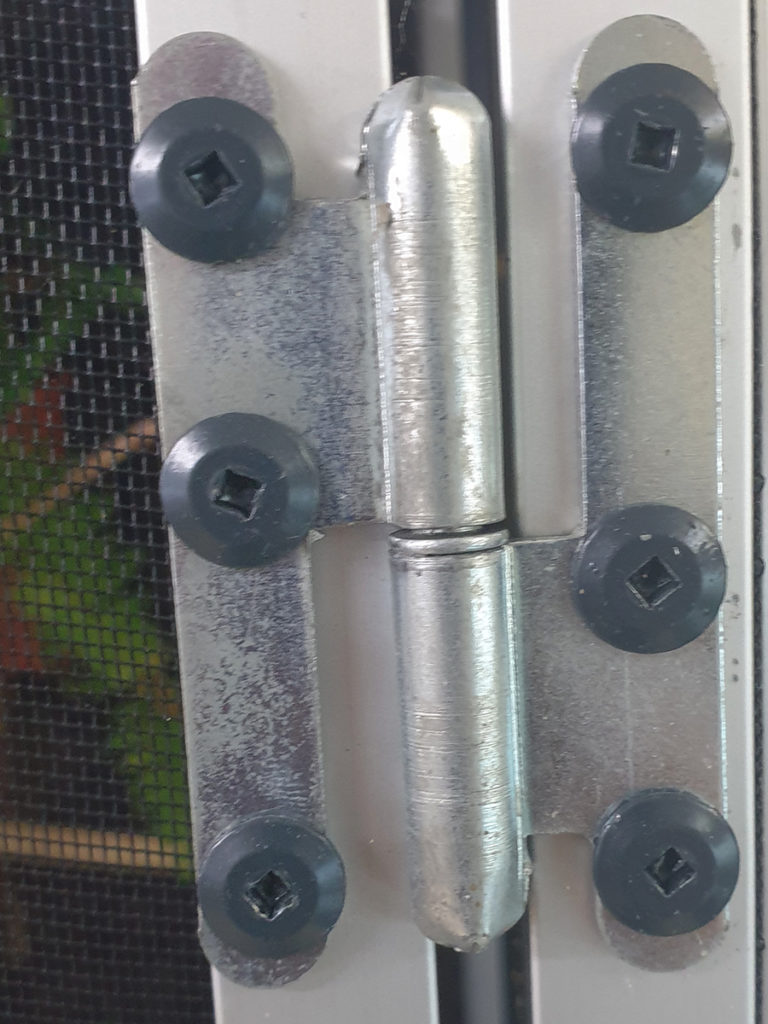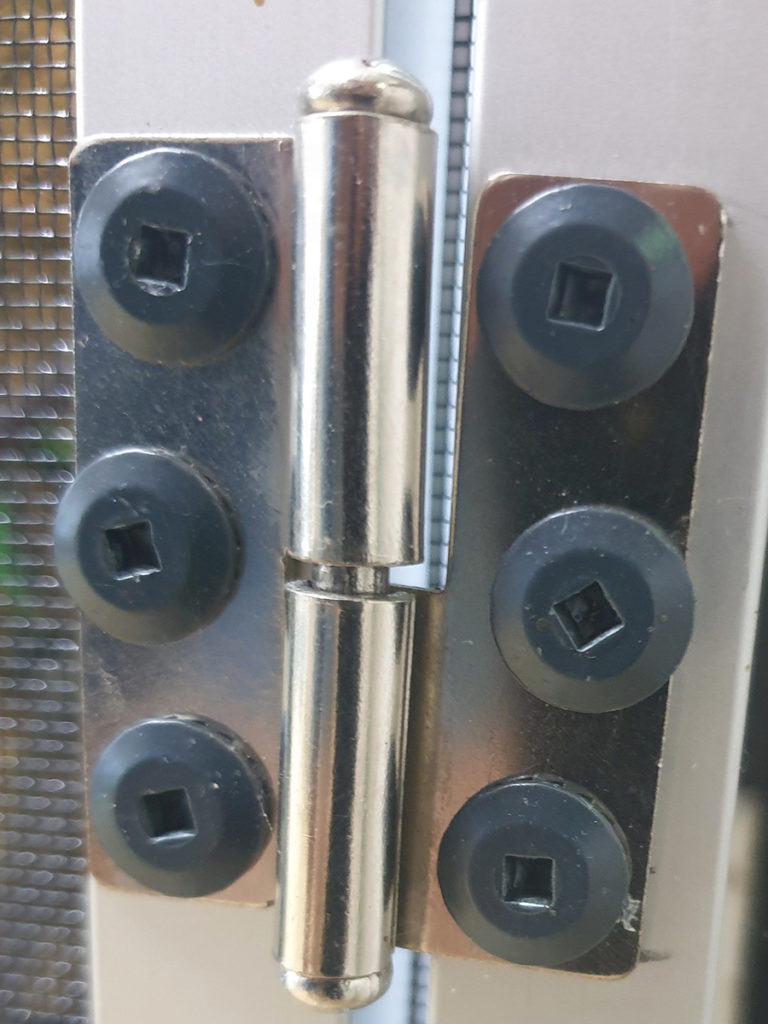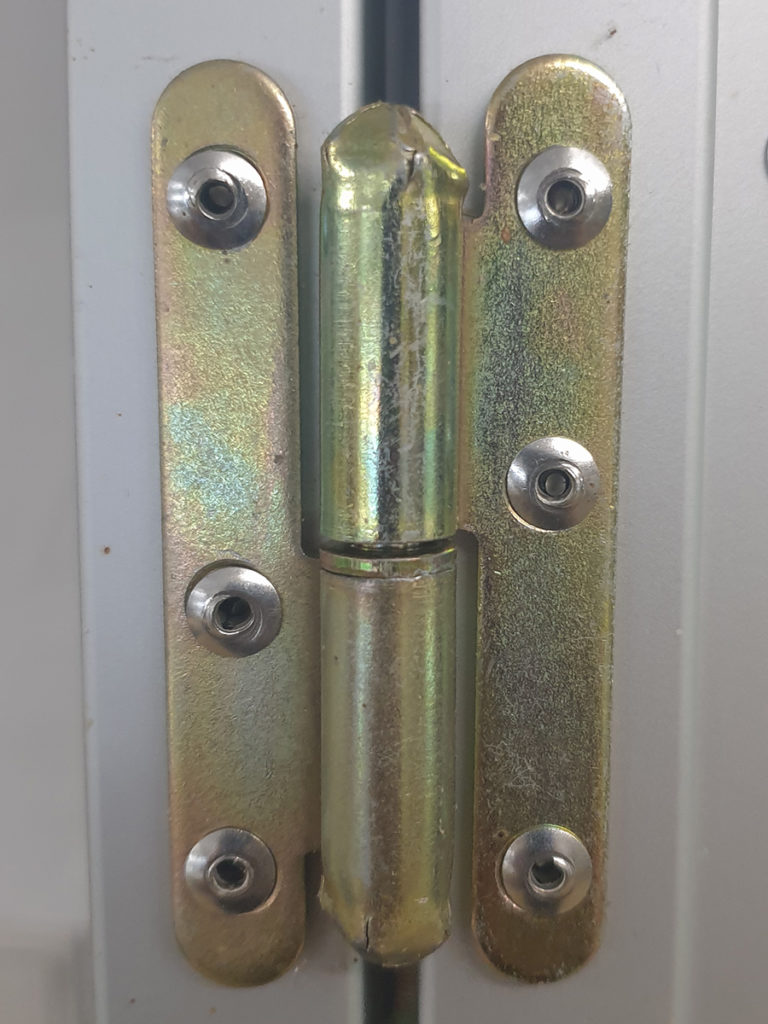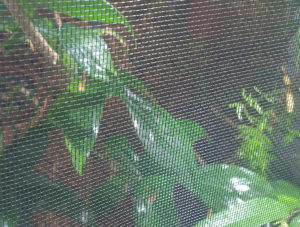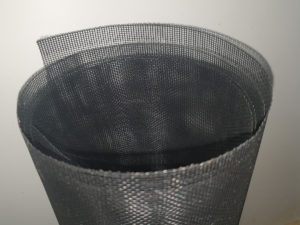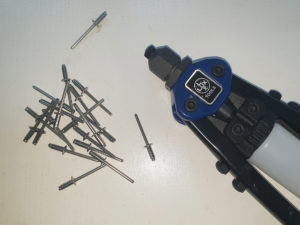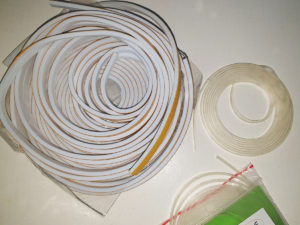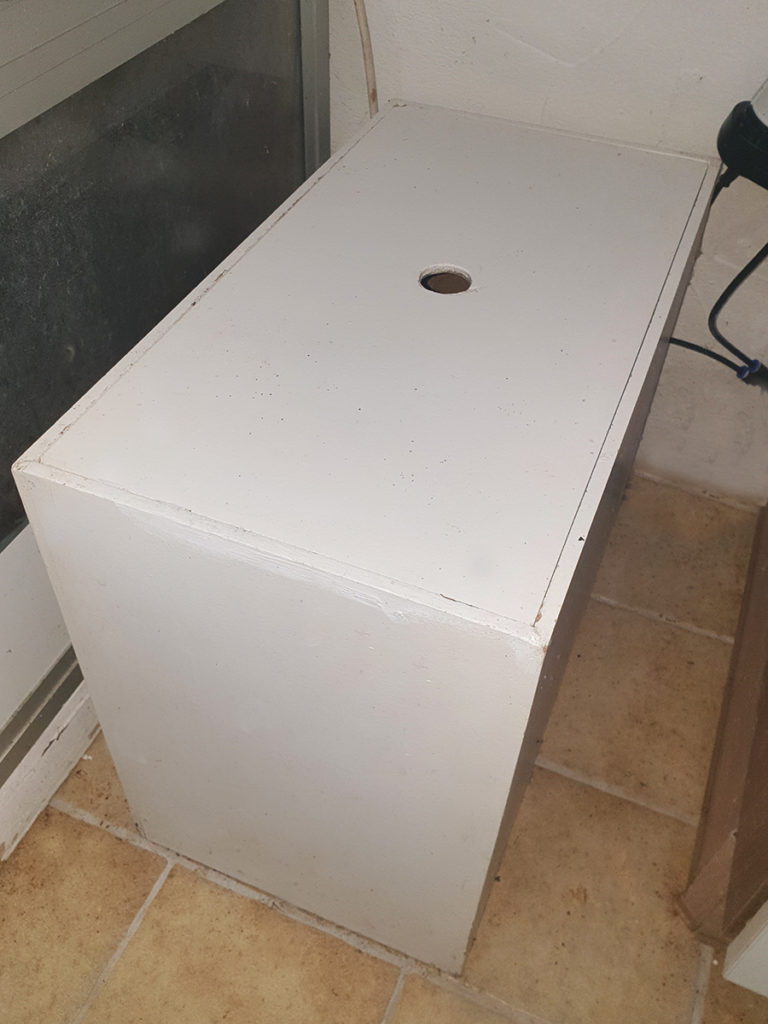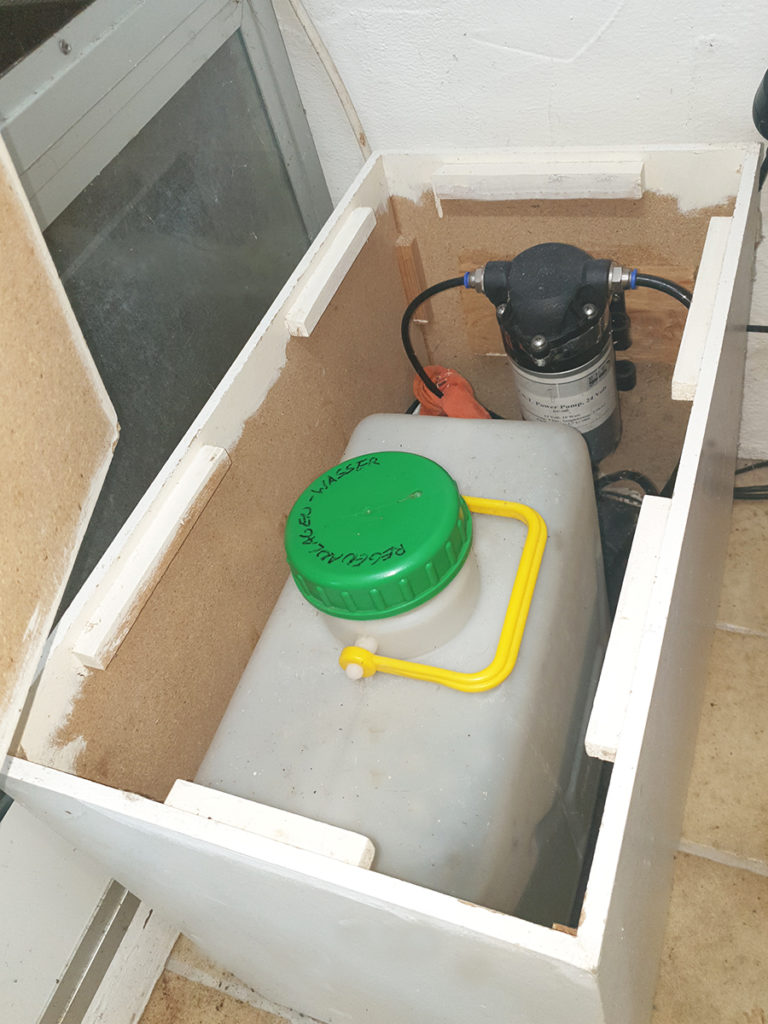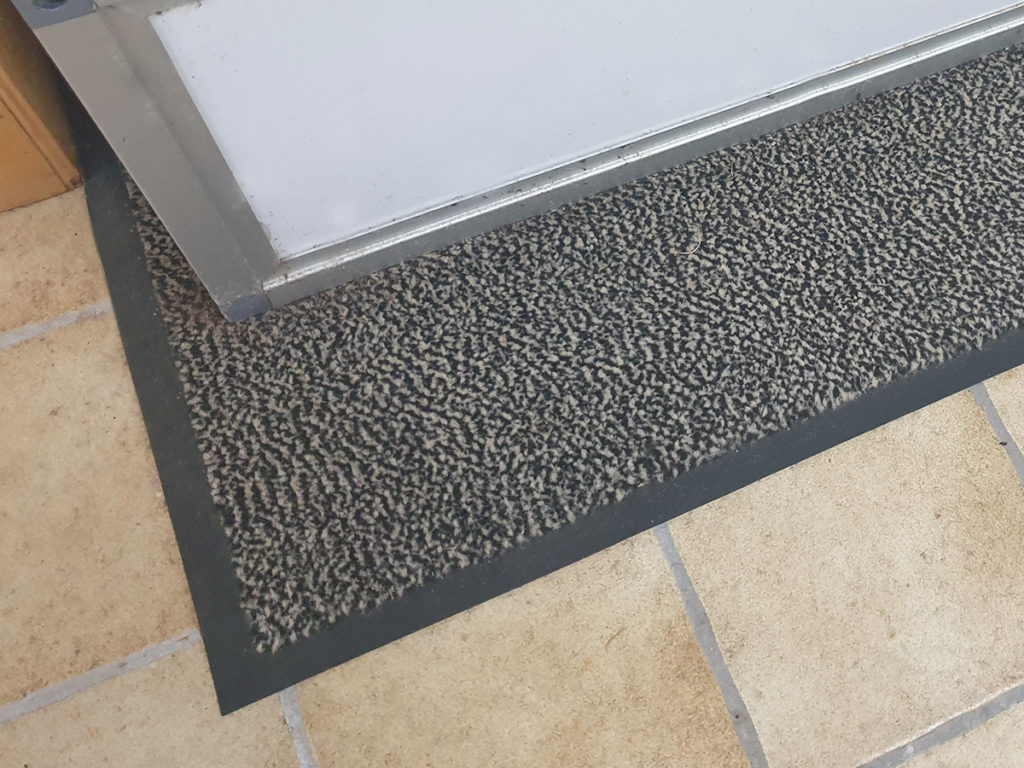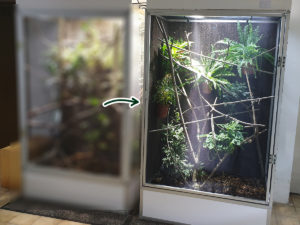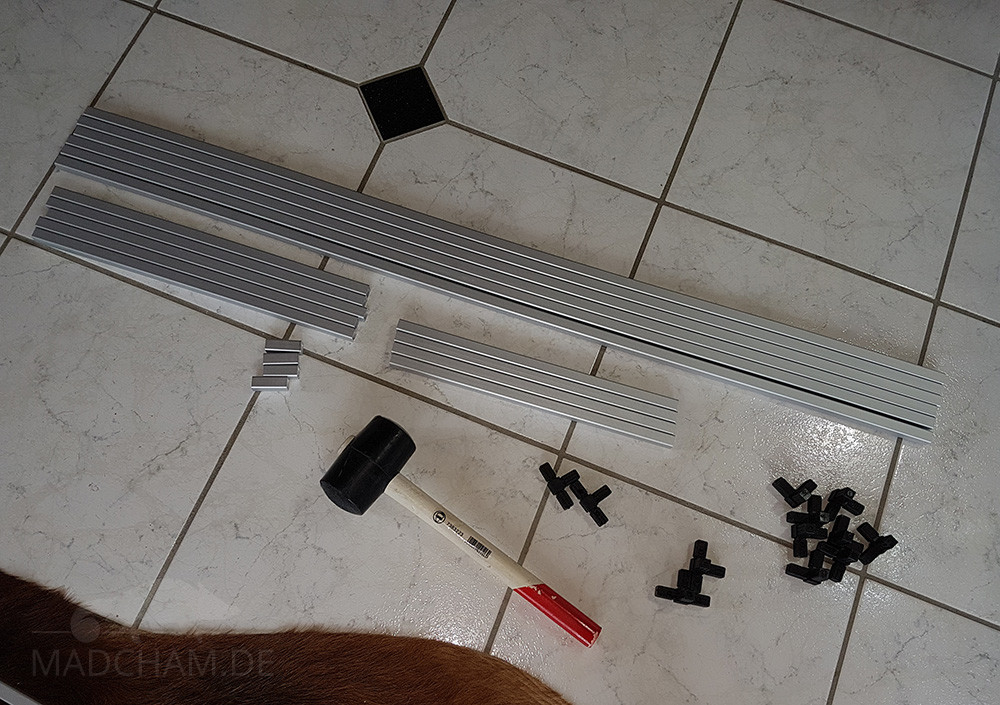
After building our own chameleon terrariums for about 20 years now, we would like to pass on some experiences that cannot be found in the building instructions. After all, some things you only think about when you are already in the middle of it. Very basic: Planning is the most important thing! Therefore, please take enough time if you want to plan all the dimensions and components yourself. If you copy the instructions or have them planned, you will of course have a decisive advantage.
Note: If you consider yourself a great builder, you may ignore this article. It is intended for beginners who have not yet built twenty terrariums themselves.
The size of the terrarium
In principle, “there is no such thing as too big” applies to almost all chameleons, but some things should still be considered when planning. Because terrarium dimensions find their limits primarily in the dimensions of the rooms in which they are located, but also in the daily care of the chameleon. Therefore:
Depth: Don’t plan too deep! At least not if you plan to move the terrarium again at some point or if the terrarium is to be relocated within the same house. Common door dimensions are 86 cm and 98.5 cm wide. If all dimensions (width, height and depth) of a terrarium exceed 90 cm, it can no longer be transported through the door. So you either need alternative transport routes (large-frame windows or patio doors) or you have to dismantle the terrarium if you want to transport it again. Note at this point: Theoretically, aluminium profiles can be taken apart again. In practice, this is only possible with great effort, which you seriously won’t undertake, and with a high risk of long-term damage. If in doubt, just measure the doors of your future terrarium room – there are also 61 and 73.5 cm wide doors in Germany – and there may be others in other countries!
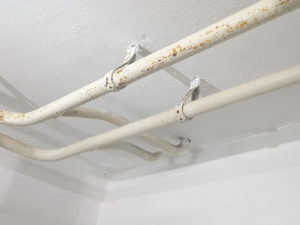
Pipes on the ceiling, as here in a basement room, should be taken into account when planning the terrarium
At best, you can reach and remove a sick or very uncooperative chameleon from the terrarium at any time. On one hand, this means that one side or the front of the terrarium should open as wide as possible. This can be achieved by using hinged doors. Secondly, the depth of the terrarium should not be too great. At a depth of 1.50 m, hardly anyone can reach the back wall, especially if there are still branches and plants in the terrarium. Even in small tanks, a great depth of the tank can lead to problems in caring for the terrarium’s inhabitants.
Height: If you have a ceiling height of 2.30 m and want to use aluminium profiles, you cannot build a 2.20 m terrarium in this space. On the one hand, lighting is usually needed above the terrarium. On the other hand, you need space at the top to knock the last aluminium profiles together. And if you can’t reach up with a rubber mallet, you can’t assemble the profiles either. Especially in basements, watch out for heating pipes, ceiling lamps, suspended ceilings and other “nuisances” that could obstruct the intended location of the terrarium. Always remember: What should the finished terrarium look like and what light should be fixed above it and how? Good planning in advance saves a lot of trouble afterwards.
The weight of the terrarium
Both the size of the future terrarium and the filling height of the substrate should take into account the weight of the completely furnished and the empty terrarium. If you ever want to move the tank again, light construction material such as Forex is advantageous over heavy materials such as wood or glass. Add to this the weight of the substrate and drainage, usually moist (!) soil and wet expanded clay. As a rule, large terrariums cannot be placed on cabinets or wooden superstructures, but smaller ones can because of their lighter weight. So: Calculate beforehand what you will need with dry soil and add a few kilos of water.
The doors of the terrarium
There are various door systems for terrariums: Trap doors have not proved successful with chameleons. Sliding doors, which run in two plastic guide rails one behind the other, can be used well for small terrariums with leaf chameleons, for example. However, the larger the terrarium, the heavier the glass panels become. The guide rails can be made smoother by regularly vacuuming them out with a hoover and applying a little curd soap, but they will not run completely smoothly once they reach a certain size. For glass panes larger than one square metre, it is therefore advisable either to switch to a roller system or to use aluminium gauze in a frame instead of glass. Hinged doors, which are especially practical in large terrariums for tree-dwelling, medium-sized to large chameleons, are difficult to realise with glass because of the weight. A frame made of aluminium profiles and gauze is also suitable here, as it is very light.
We currently use sliding doors for smaller terrariums and hinged doors for all terrariums with an edge length of over 100 cm. As door hinges (hinges that connect the terrarium frame and the door) we recommend lift-out hinges. Alternatively, you can use so-called screw-on hinges for hinged doors. These fix the door firmly to the terrarium with screws. The door can then no longer be lifted out. The larger the door, the more hinges are needed. Two hinges per door are standard. Caution: When buying, you should already know on which side the stop of the terrarium door should be. There are hinges with a right-hand stop and hinges with a left-hand stop.
The ventilation surfaces
For the planned size of the ventilation areas, please consult this article. In principle, aluminium gauze has proven itself for the ventilation surfaces of chameleon terrariums. Fly screens made of fibreglass or polyester, contrastingly, are not suitable for terrariums. Unfortunately, they are relatively flammable and can be eaten by feeders. Stainless steel gauze is more durable than aluminium gauze but correspondingly more expensive.
The mesh size required depends on which chameleon is to be kept in the terrarium and how much light incidence you want. The wider the mesh, the higher the chance that a chameleon will injure its tongue in it. The smaller the mesh, the less light and UV-B radiation get through. A perforated sheet, for example, only allows about 30% of the light above it to pass down into the terrarium, so it is per se unsuitable as a lid ventilation surface. A gauze with 2.5 mm mesh, meanwhile, lets a good 70% of the light and UV-B radiation through. How much light already purchased gauze blocks can be calculated with this simple guide.
A mesh size of 2 x 2 mm has proven to be a practical mesh size for small to large chameleons. Only mesh sizes of 0.8 x 0.8 mm or smaller are “drosophila-tight”. A mesh size of 0.5 mm x 0.5 mm is most commonly used under this term. Fruit flies can no longer get through these meshes. Such gauze is therefore particularly suitable for rearing terrariums or terrariums of especially small chameleon species.
Black or anthracite-coloured aluminium gauze offers the best view into the terrarium. You can almost not see the gauze and the gauze hardly reflects. Silver-coloured aluminium gauze is much easier to obtain, it is available in almost all mesh sizes and it is somewhat cheaper than black. On the other hand, the view into the terrarium is much worse with silver aluminium gauze. By the way, we can only strongly advise you to buy black aluminium gauze and not to spray silver gauze black.
Screws or pop rivets
There are self-drilling screws, like the ones we used for our outdoor enclosures, in all sizes. They can easily be countersunk into aluminium profiles without pre-drilling. This saves a lot of time and effort. For normal screws, holes all have to be pre-drilled. Pop rivets look neat, but are difficult to remove again. Another tip: don’t use the cheapest pop rivet pliers. The pliers in the middle to upper price segment are incredibly much easier to use.
Tightness
Terrarium doors that do not fit perfectly can easily be sealed with Tesamoll. In the past, there were so-called “cricket barriers” for the gap between two panes of glass, small plastic strips that could be pushed in between and which crickets and crickets could not climb over. Sometimes you can still find them in small terrarium shops. For glass doors for young animals or especially small chameleons, there is also special silicone tape (Terra-Safe) that can be stuck onto glass panes and can be used to seal even millimetre narrow gaps.
Water protection
To protect the floor under the rainwater system from water drops or water that has not been perfectly poured into the container, wide doormats (“dirt-trapping mats”) have proven their worth. They are made of plastic on top and rubber on the bottom, so they do not let small amounts of water through. We also use the same mats under the terrariums. We also place the rainwater systems in wooden boxes we built ourselves, which are lined with pond liners at the bottom.
If you have any further ideas for tips on terrarium construction or would like to ask a question, please feel free to send us an email. We will be happy to add more topics.

